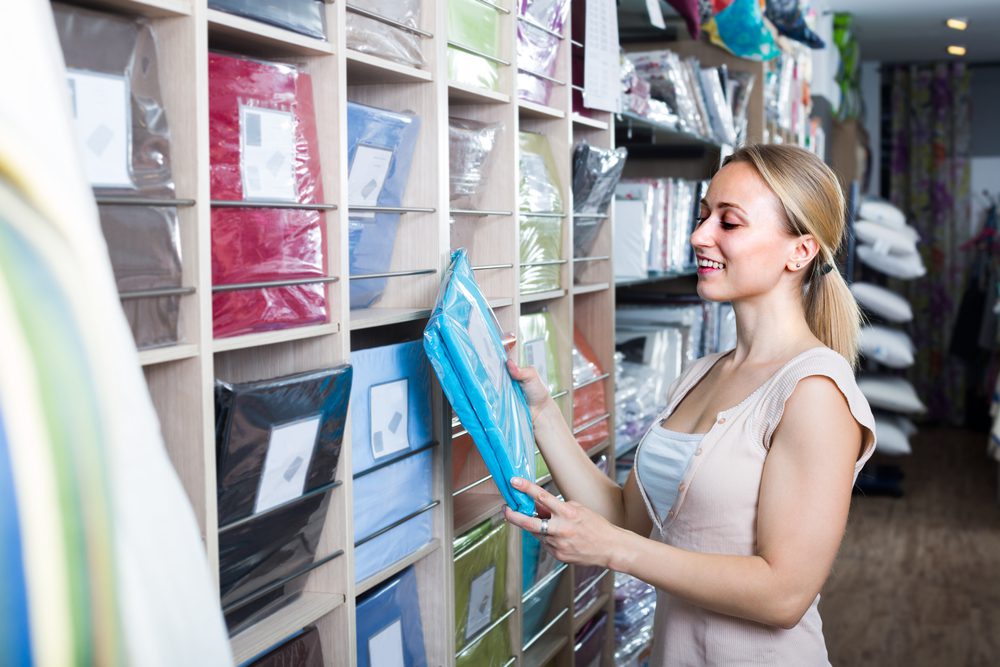Bedding is a catchall term for sheets, pillowcases, and various types of blankets. In addition to decorative purposes, bedding is used to protect your mattress from contaminants and improve the comfort level of your sleep surface.
It might seem like an afterthought, but the bedding you use can have as much of a bearing on your sleep satisfaction as your mattress, pillow, or bed frame. Bedding shoppers can choose from a wide range of materials and designs, some of which are better suited to their needs and preferences than others. Understanding the differences between various types of bedding can put you one step closer to creating the ideal sleep space.
Below, you’ll find a breakdown about different types of bedding, common materials used to produce these items, and factors to consider when making a bedding purchase. Also be sure to check out the links farther down on the page for detailed answers to common questions about bedding.
Types of Bedding
Each type of bedding serves a different purpose. As such, there are unique considerations to make when choosing sheets and pillowcases, blankets, comforters and duvets, and duvet covers.
Sheets
A standard sheet set includes a fitted sheet with elastic edges that can be tucked around the corners of your mattress, as well as a flat sheet that rests on top of the fitted sheet. Sheet sets also include one or two pillowcases, depending on the size you choose.
Important considerations for choosing the best sheets include:
- Material: Cotton and polyester are the most common materials for sheets. Breathable, natural materials like linen and silk are also available, as are fabrics produced from natural sources like Tencel from eucalyptus and rayon from bamboo. Wool sheets offer cooling and insulation, making them a good option for year-round use.
- Weave: Sheets with a percale weave are crisp and breathable, and should gradually become softer over time. A sateen weave makes sheets feel exceptionally soft and drapey.
- Pocket depth: This refers to how far the elastic corners of a fitted sheet will stretch. If your mattress height exceeds the pocket depth, then the sheet won’t fit properly.
- Size: Twin and twin XL sheet sets usually include one pillowcase, whereas larger sizes have two.
- Ease of care: Most sheet sets are fully machine-washable, but some premium materials require hand-washing or dry-cleaning.
Blankets
Traditional blankets are designed to cover your body and insulate you from the cold. You can also use a lightweight blanket during warmer times of the year for some coziness without overheating. Traditional blankets are designed to cover you and your sleep partner. Smaller versions include throws and coverlets.
There are also some specialty blankets available. An electric blanket contains heating wires that allow you to set the temperature to your liking. These blankets usually have cords that need to be plugged into outlets and shut-off timers in case you fall asleep while using the blanket.
In recent years, weighted blankets have become increasingly popular with sleepers. These blankets are constructed with beads, pellets, or other materials that make the blanket feel heavy, which some people find relaxing and conducive to good sleep. Adult weighted blankets are available in weights ranging from 10 to 30 pounds, and there are lighter designs intended for kids. The rule of thumb is to use a blanket that weighs about 10% of your body weight.
Comforters, Duvets, and Duvet Covers
Many people use the terms “comforter” and “duvet” interchangeably. While these two bedding items are largely similar, there is one key difference. Comforters include an outer shell that cannot be removed. Duvets also have shells to contain their fill, but they are designed to fit inside covers. Most duvet covers are machine-washable, allowing you to keep your bedding hygienic without damaging the inner duvet. For comforters, dry-cleaning or washing in an industrial machine is often needed.
Comforters and duvets are typically made from the same types of materials. These include fill materials like down and feathers, down alternative fibers, cotton, or eucalyptus fibers. The outer shell of a comforter or duvet may be made of cotton, polyester, rayon, wool, or silk. Duvet covers are usually made from the same materials as comforter and duvet shells.
Shop the Best CPAP MasksGet Your Sleep Questions Answered Live on 4/30
Have questions about sleep? Get all your sleep-related questions answered in a Live Q&A on YouTube with renowned sleep expert Dr. Michael Breus at 5 p.m. PST/8 p.m. EST.







